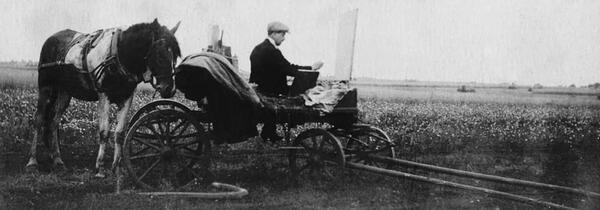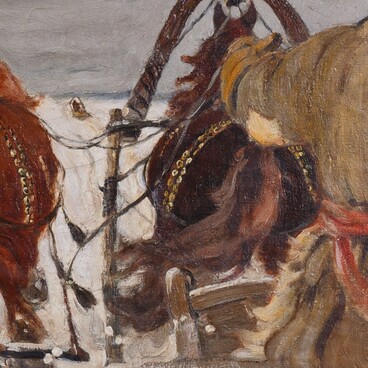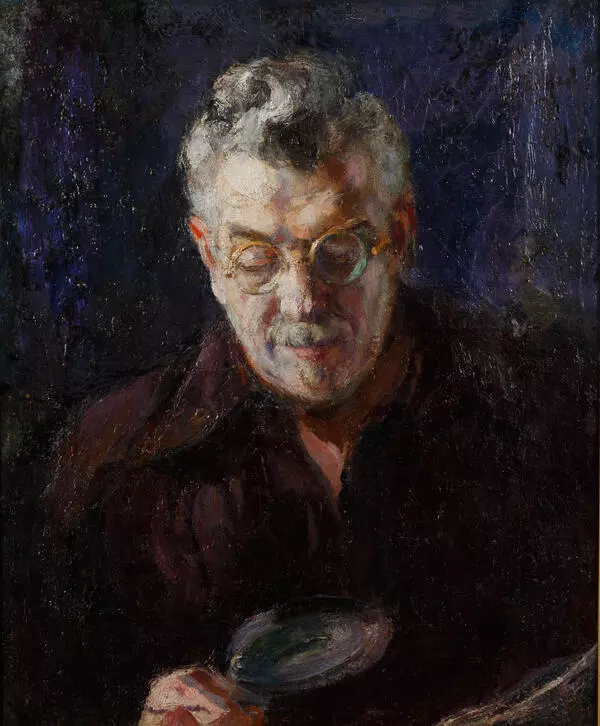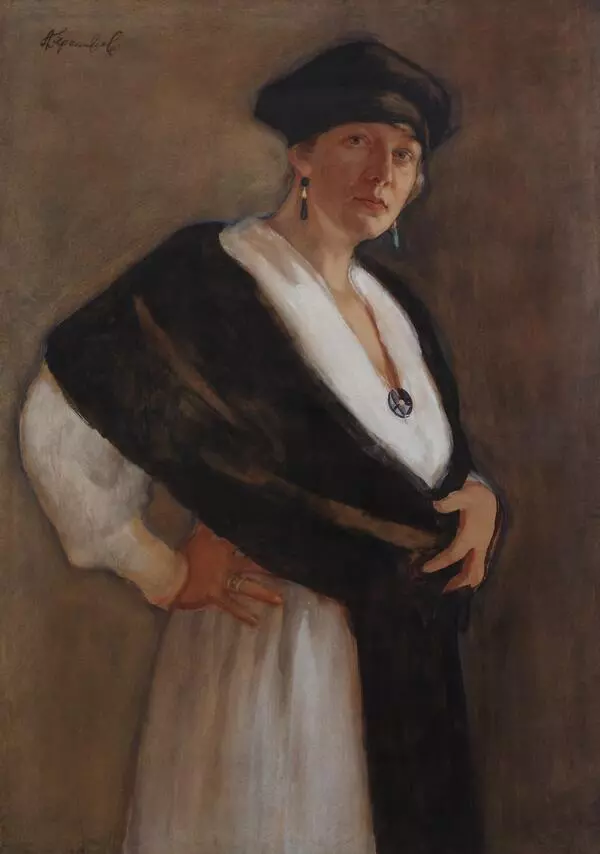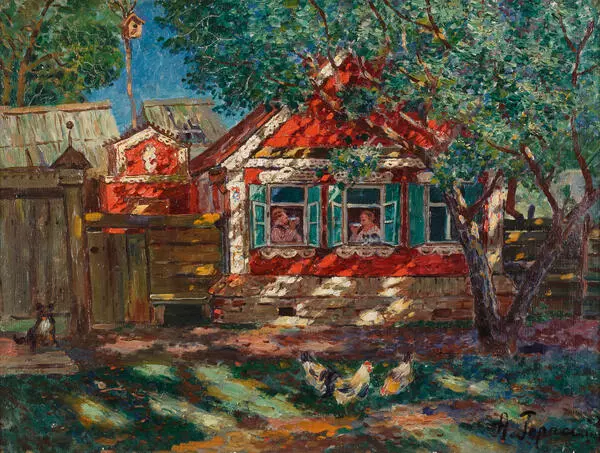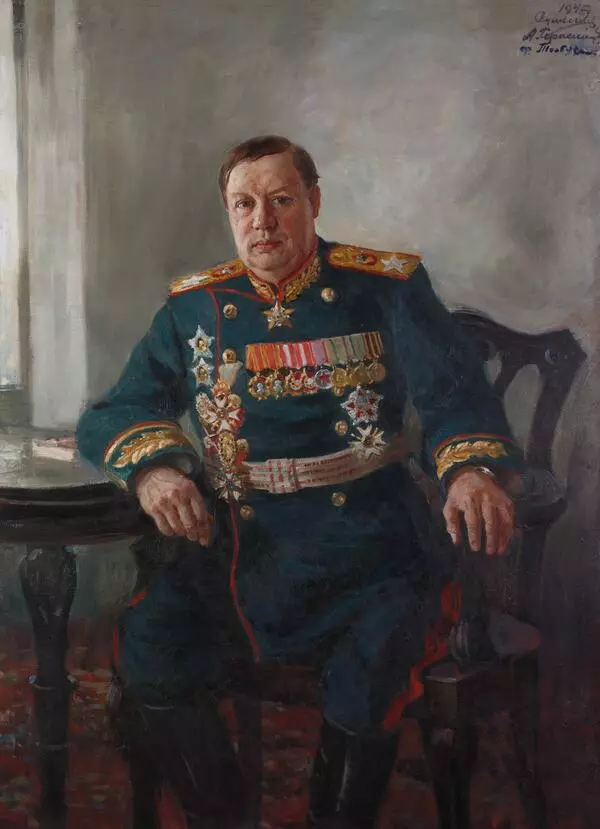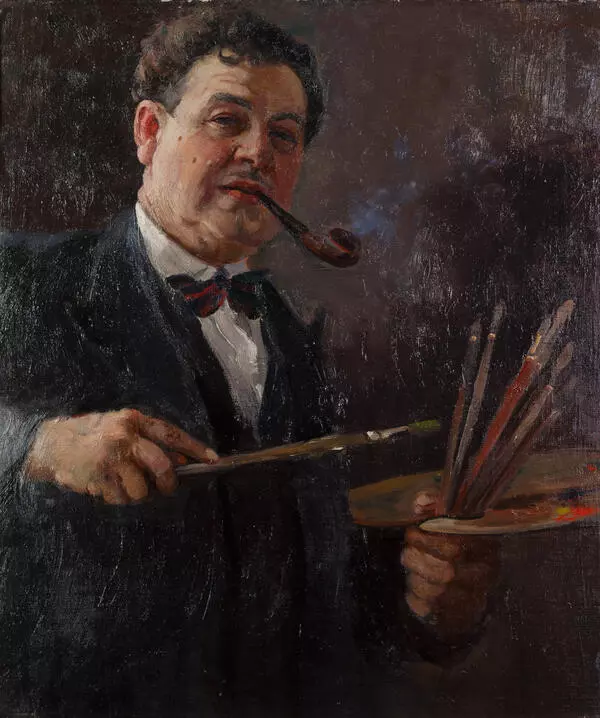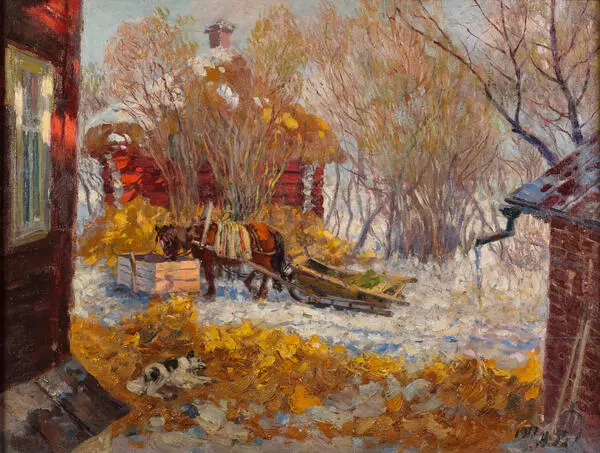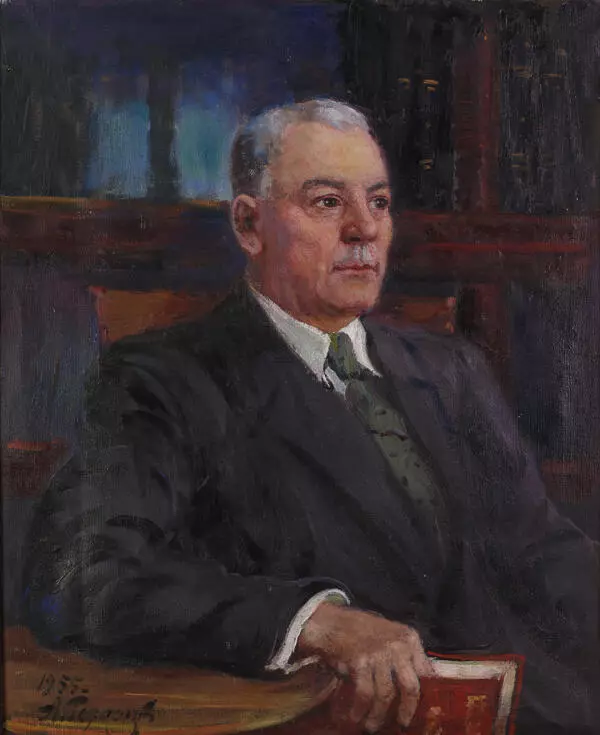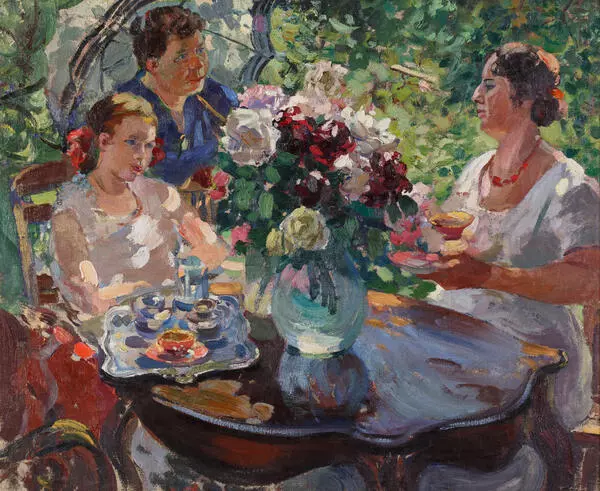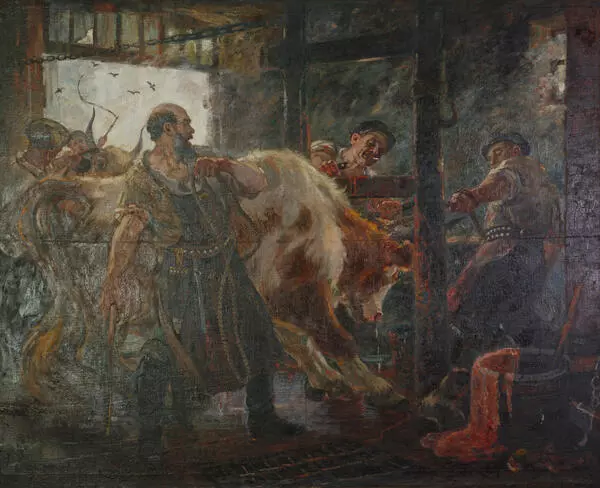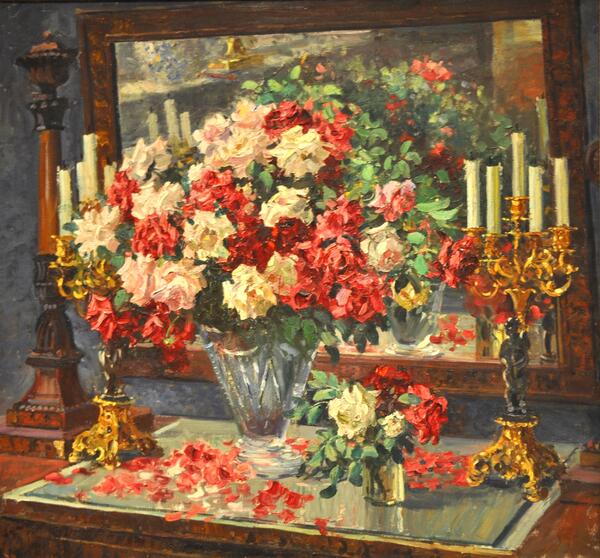For the first time in Russian poetry, Aleksey Koltsov made a peasant with his inner feelings the main character of his poems and glorified the beauty of the nature of the Voronezh governorate. The biography of Alexander Gerasimov bears a close resemblance to the life of the poet Aleksey Koltsov, who was a native of the Voronezh governorate, neighboring the steppe Kozlov district and, just like Gerasimov, a son of a livestock trader.
The work of a livestock trader required constant horse riding. As Alexander Gerasimov later recalled, of all his father’s activities, what he liked most was riding to country fairs to buy cattle. In the painting “Aleksey Koltsov, Poet of the Steppe”, the artist presented his impressions of riding with his father along evening roads. Along the way, their cart would go through endless villages of the Tambov governorate. The artist liked meadows, fields, the bitter aroma of wormwood, and the subtle fragrance of roadside flowers. He kept his passionate, poignant love for nature throughout his life, and it was the love that determined his creative vision. Coming home from stuffy and bustling Moscow, the artist enjoyed wandering around the outskirts of the town of Kozlov (today known as Michurinsk), painted sketches and admired nature. The entire south of the Tambov region is a flat steppe, without hills or ravines, stretching into the blue horizon, straight like a taut string.
The poet Aleksey Koltsov was inspired by the charm of the steppe landscape and devoted many verses to it. Lyrical descriptions of nature full of deep love for his native land, a thorough knowledge of folk life, and the simple rhythm of his works captivated Alexander Gerasimov and stayed with him ever after. The artistic interpretation of reality, native landscape and day-to-day life familiar to Alexander Gerasimov, of which Aleksey Koltsov made a stark statement, “Small is my circle, dirty is my world, bitter is my living in it, ” were of great importance for the awakening and development of the creative self-awareness of the future artist. They taught him to conceive images, gave him material to express his feelings and sentiments, as well as an impetus to search for new ways in life. The great lyricist, strongly tied to the life of common people, who knew the need, grief, joy, prose and poetry of the life of a plain Russian man, helped Alexander Gerasimov to explore the social relationships and contradictions of his environment.
The work of a livestock trader required constant horse riding. As Alexander Gerasimov later recalled, of all his father’s activities, what he liked most was riding to country fairs to buy cattle. In the painting “Aleksey Koltsov, Poet of the Steppe”, the artist presented his impressions of riding with his father along evening roads. Along the way, their cart would go through endless villages of the Tambov governorate. The artist liked meadows, fields, the bitter aroma of wormwood, and the subtle fragrance of roadside flowers. He kept his passionate, poignant love for nature throughout his life, and it was the love that determined his creative vision. Coming home from stuffy and bustling Moscow, the artist enjoyed wandering around the outskirts of the town of Kozlov (today known as Michurinsk), painted sketches and admired nature. The entire south of the Tambov region is a flat steppe, without hills or ravines, stretching into the blue horizon, straight like a taut string.
The poet Aleksey Koltsov was inspired by the charm of the steppe landscape and devoted many verses to it. Lyrical descriptions of nature full of deep love for his native land, a thorough knowledge of folk life, and the simple rhythm of his works captivated Alexander Gerasimov and stayed with him ever after. The artistic interpretation of reality, native landscape and day-to-day life familiar to Alexander Gerasimov, of which Aleksey Koltsov made a stark statement, “Small is my circle, dirty is my world, bitter is my living in it, ” were of great importance for the awakening and development of the creative self-awareness of the future artist. They taught him to conceive images, gave him material to express his feelings and sentiments, as well as an impetus to search for new ways in life. The great lyricist, strongly tied to the life of common people, who knew the need, grief, joy, prose and poetry of the life of a plain Russian man, helped Alexander Gerasimov to explore the social relationships and contradictions of his environment.


